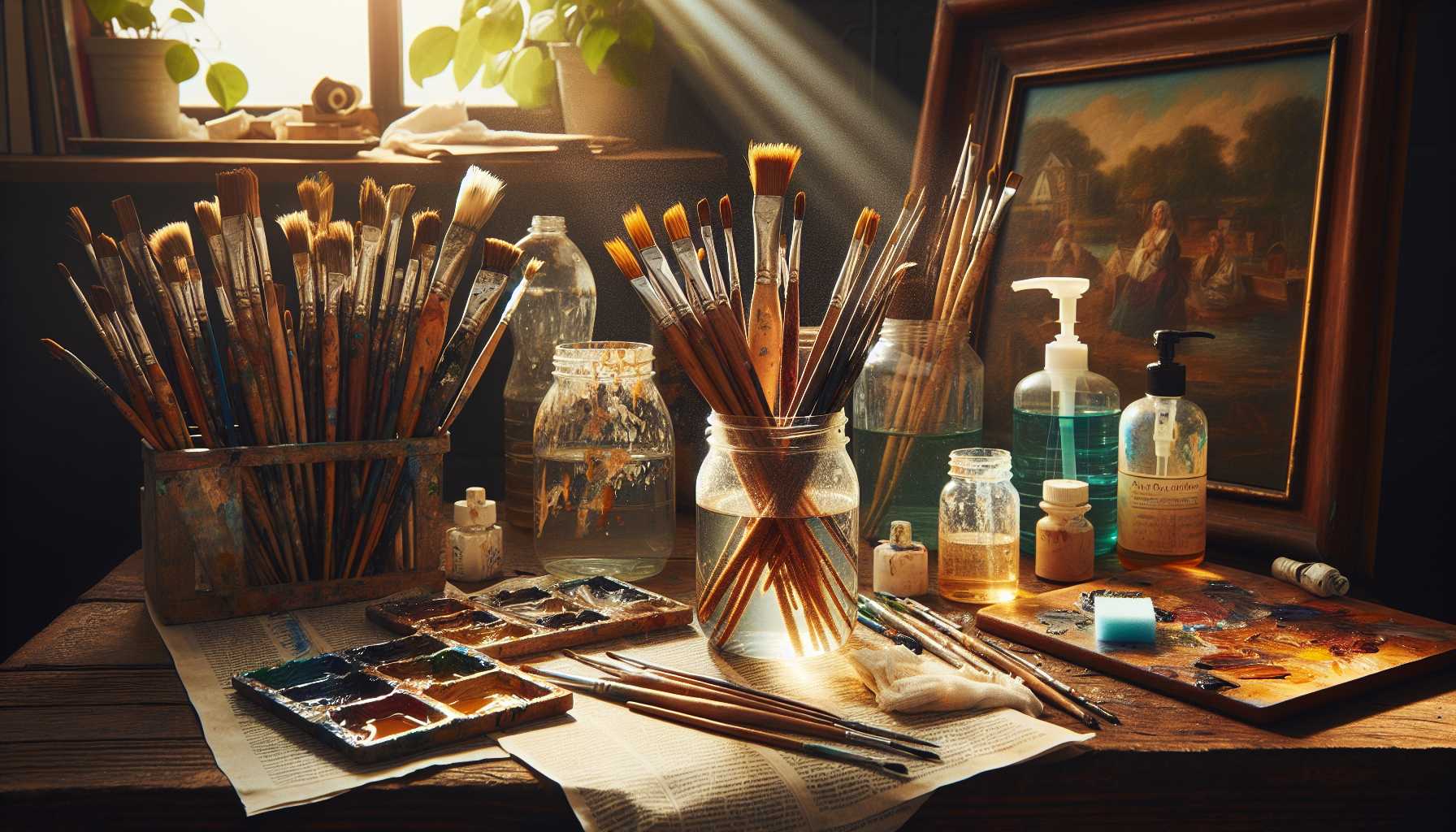Cleaning up after a creative oil painting session may not be the highlight of an artist’s day, but it is essential. With the appropriate tools and techniques, this task can become more manageable, and you can even prolong the durability of your invaluable art supplies.
Essential Supplies for Cleanup
To ensure a practical cleanup routine, assemble these indispensable items:
– Clean rags or paper towels
– Soap (preferably mild dish soap or specially designed brush soap)
– Brush cleaner or mineral spirits
– A container to prepare the cleaning solution
– An old jar to keep the dirty solvent
– A brush cleaning pad or container
– Disposable hand-gloves
How to Clean Your Brushes
Your brushes deserve the best care, as they are your reliable partners in art. Here’s how to clean them:
1. Wipe off the surplus paint using a paper towel.
2. Dip it into the brush cleaner or mineral spirits.
3. Gently work the solution into the bristles.
4. Repeat the process until the brush is clean.
Don’t forget to shape the tips of your brushes before storing them in an upright position. You’ll appreciate this step the next time you paint!
Simplifying Palette Cleanup
Avoid letting the paint dry and accumulate on your palette. Here’s a simple guideline:
– Scrape off any excess wet paint.
– Utilize mineral spirits to remove the remaining paint.
– Wipe it clean with paper towels.
– For glass palettes, you can finish the cleanup with a window cleaner.
Environmentally Friendly Options
Let’s consider some eco-friendly alternatives for the sake of the planet:
– Use safflower oil for the initial brush cleaning.
– Choose bio-based solvents.
– Opt for reusable cleaning cloths.
– Use natural soaps.
Keeping Your Workspace Tidy
A clean studio sets up for a productive and happy environment. Here are some tips:
– Cover your workspace with newspaper.
– Always have your cleaning supplies at arm’s reach.
– Make it a habit of cleaning as you work.
– Discard materials responsibly and correctly.
Prioritizing Safety
Remember, your health is more important than any artwork you create. Always:
– Paint in a well-ventilated space.
– Use protective gloves.
– Ensure solvents are securely sealed.
– Dispose of used rags safely to prevent any potential fire risk.
Storage Solutions to Keep your Art Safe
Keeping your artwork safe is as crucial as maintaining a clean workspace.
